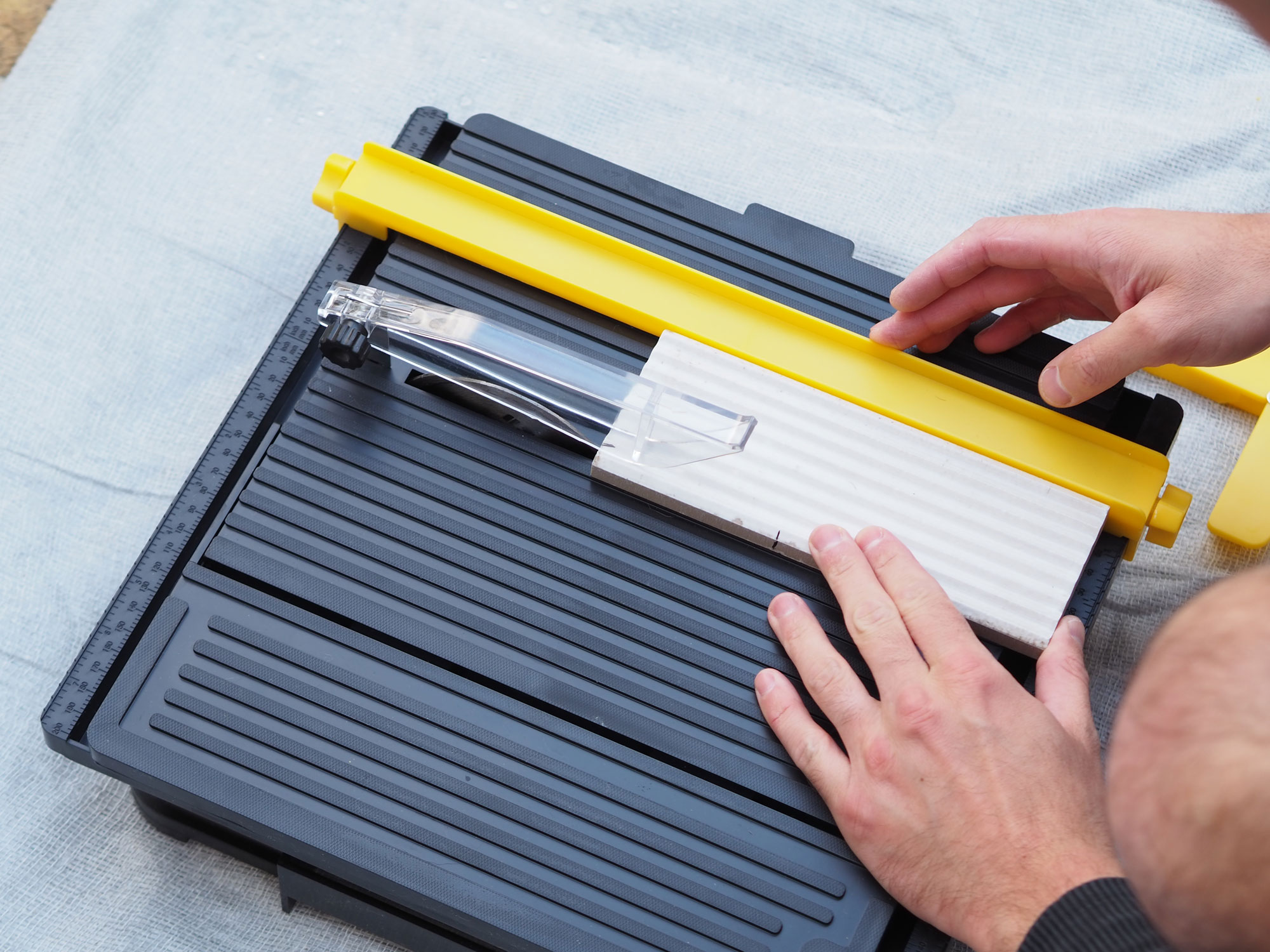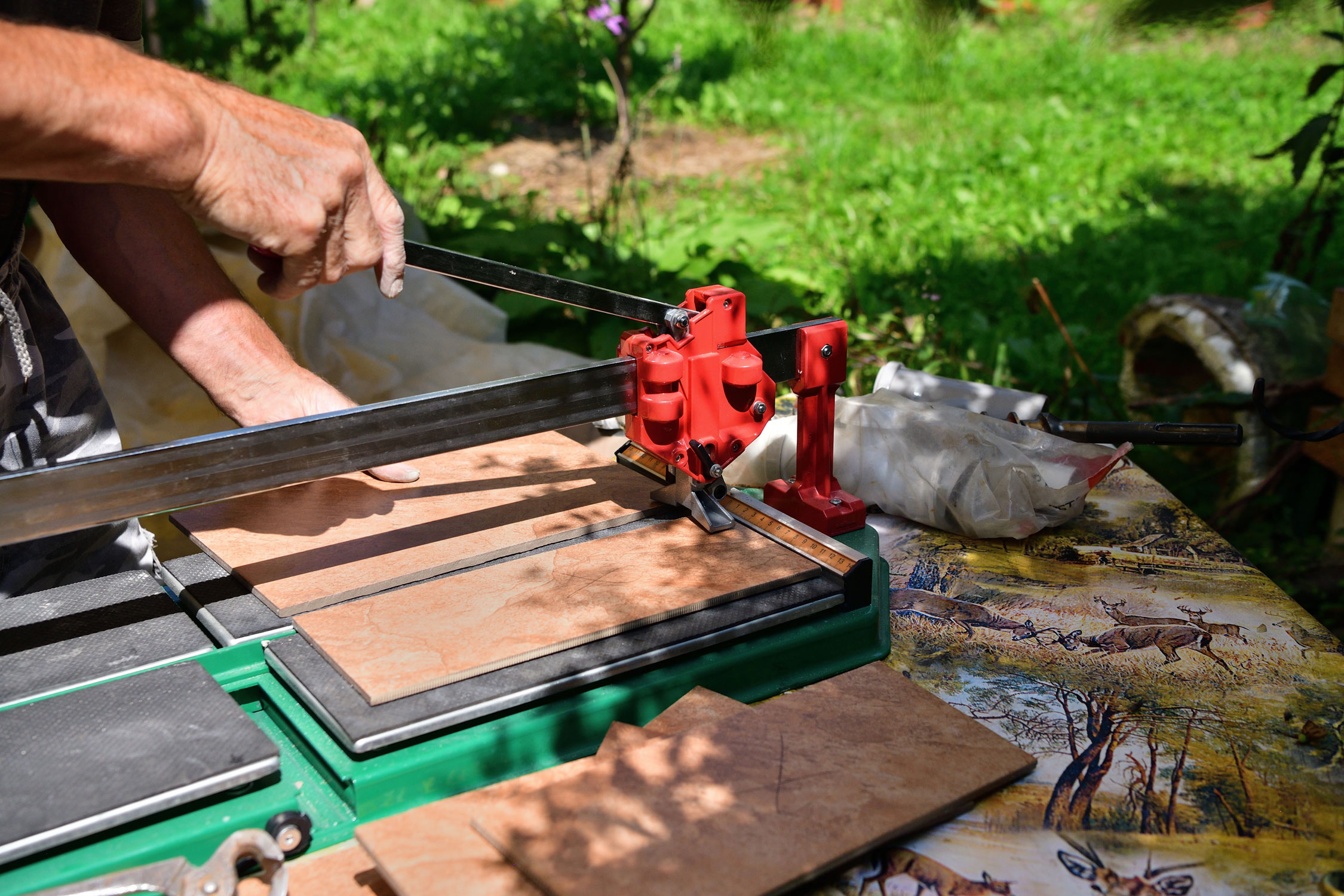Cutting Tiles: How to Cut With Different Types of Tools
Discover the different ways of cutting tiles for DIY projects with this handy step-by-step guide

There is a multitude of ways of cutting tiles, depending on the project at hand. Some of these methods are easy, giving you clean cuts with little mess, while some are, it's fair to say, more labour intensive and disruptive.
However, it's not a task that you need to be afraid to tackle in most instances, especially when working with smaller tiles where you have some wastage built-in to get to grips with how your cutting method works. However, bear in mind that certain ways of cutting tiles are best suited for different applications, so you'll need to pick the right one for you.
Here, we outline the methods available, with advice on how to cut tiles by these various methods.
What's the Best Way to Cut Tiles?
The best method of cutting tiles depends on the task at hand and the tiles you're using. For example, a manual tile cutter is a great tool to use as you simply score the tile and then snap along the line to break the tile. However, this means it can only be used to cut straight lines, making it suited for edges of floors and walls, but not for cutting around fixtures and fittings.
It's also worth considering porcelain vs ceramic tiles when making your choice. Porcelain tiles are much harder than ceramic tiles, which can in some instances be scored and snapped with a simple glass cutting tool.
How to Cut Tiles With a Wet Tile Cutter

Wet tile cutters are one of the most versatile and effective ways of cutting tiles — and definitely one of the best tiling tools available However, if you're cutting simple straight lines, you may be better with a manual tile cutter as this will be much quicker, easier and less messy. However, wet tile cutters are essential for cutting right angles or curves, for thicker porcelain or for cutting natural stone tiles.
A wet tile cutter uses a diamond blade and a water reservoir to cut through tiles. The diamond blade runs through the water reservoir, cooling the saw down as it cuts so that it doesn't overheat while cutting through these hard materials.
Wet tile cutters start from around £40-£50 for a budget version, but a better-quality, mid-range option runs at around £100+.
They tend to feature little blocks with tops the tile sits on and a sunken saw with a guard. They have guides so you can ensure a straight cut while using. However, some wet tile cutters are overhead cutters, fed with a water pump instead of the saw being recessed in the water.
Using a wet tile cutter won't release dust, but it may release small fragments of tile, so it's important to wear protective equipment including goggles when operating.
How to Cut Tiles With a Manual Tile Cutter

Manual tile cutters, sometimes called flat bed tile cutters, are a super easy way to make straight cuts with tiles. They're best suited to ceramic tiles, as porcelain is a harder material and therefore harder to cut.
To operate a manual tile cutter, you simple mark your tile and insert it onto the flat bed. Lower the handle and run the cutting wheel over the tile with light pressure — as long as the wheel is sharp, you should only have to do this once to score the tile.
Once scored, most modern flat bed tile cutters come with a built-in snapping mechanism for a clean snap of the tile. Push down gently and the tile should snap, giving you a clean cut.
How to Cut Tiles With an Angle Grinder

One of the many uses of the best angle grinders is for cutting tiles. It particularly lends itself well to cutting small, intricate details, or anywhere a freehand cutting tool may lend itself better.
You need to pick the right blade for the job, and make sure your tile is securely clamped in place before attempting to cut it.
Again, wear appropriate protective equipment when cutting with an angle grinder. This will include a respirator mask, as cutting dry with an angle grinder will release a lot of dust from the tile.
Blade-wise, you'll need a flat diamond-tipped blade for ceramic tiles, a notched blade for porcelain and a serrated blade for natural stone. Always check the manufacturer's recommendations on the blade you're purchasing.
How to Cut Tiles With Tile Nippers
When cutting small details, notches or corners, a manual tile cutter and wet tile cutter aren't the most effective, especially when accuracy is key. Enter tile nippers, or tile snips — a great addition to your tool kit when learning how to tile a wall.
These small handheld cutters can be used to take off small areas of tile a bit at a time, allowing you to nip of sections as required. You simply hold them where you want to cut, press together hard and a piece of the tile will fly off (make sure you're wearing goggles again!)
Can I Cut Tiles With a Circular Saw?
Technically yes, you can cut tiles with a circular saw if equipped with a suitable diamond tile blade for your tool. However, cutting tiles with a saw blade releases a serious of dust. (By comparison, another benefit of using a wet tile cutter is that this dust is minimised by the water element.) Personally, I wouldn't recommend this — even if you have someone else standing at hand to vacuum up dust at the source.
You can also get water pump attachments for circular saws that turn them into wet tile cutters; another option to consider.
Get the Homebuilding & Renovating Newsletter
Bring your dream home to life with expert advice, how to guides and design inspiration. Sign up for our newsletter and get two free tickets to a Homebuilding & Renovating Show near you.
Luke Arthur Wells is an award-winning interiors blogger and stylist. His blog has been one of Vuelio's top 10 interior blogs for four years running, and he recently won the Best Creative Skill category at the Amara Interior Blog Awards. Luke has worked with some of the UK's biggest brands, from John Lewis and Made to Farrow & Ball and B&Q. He's a big DIYer, and loves coming up with creative woodwork projects for his home, a Victorian terrace renovation in Essex.

